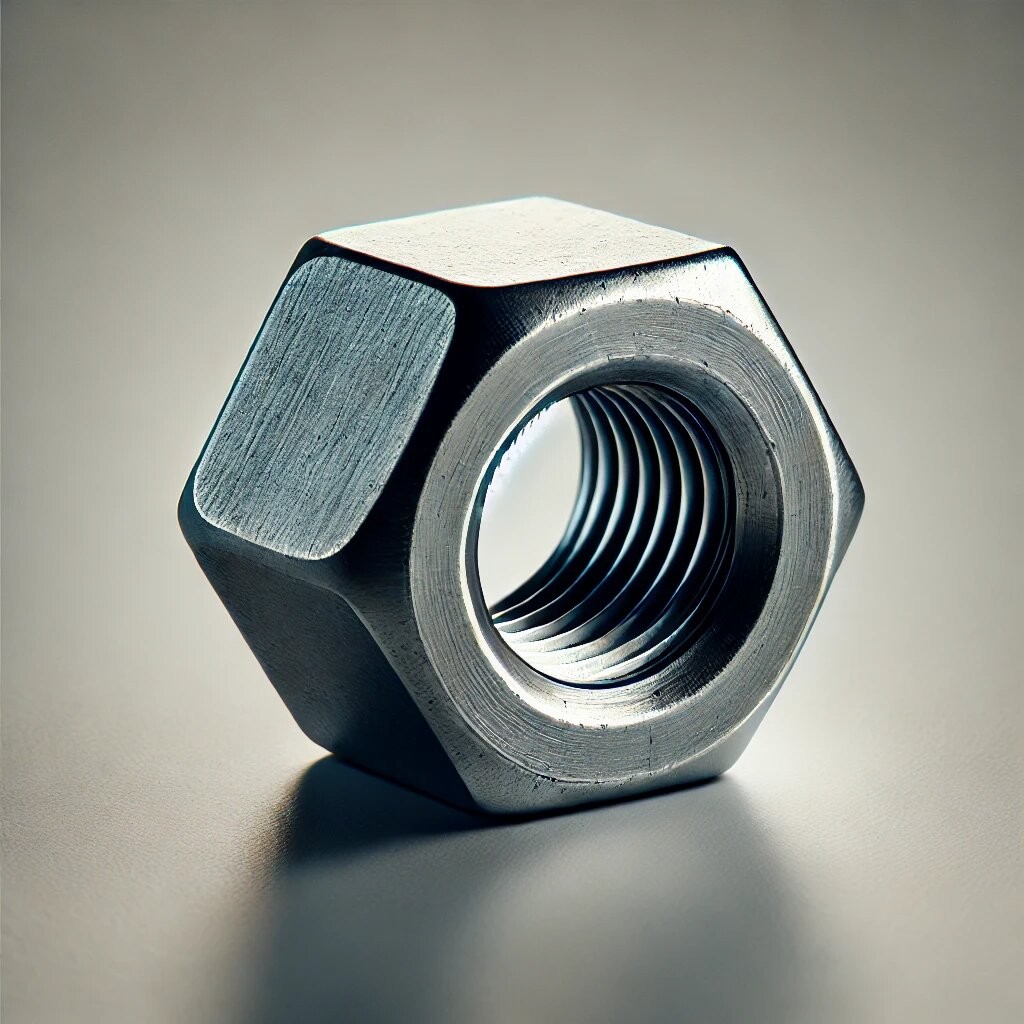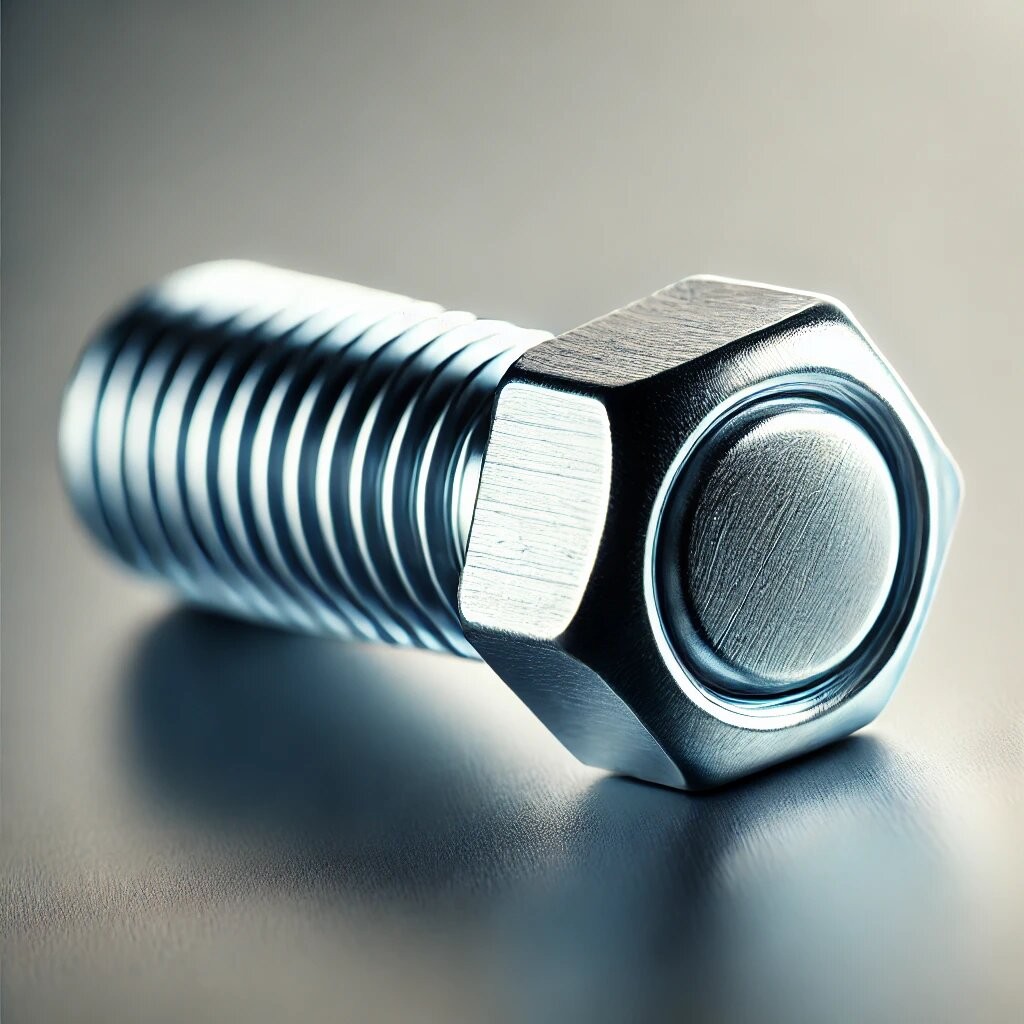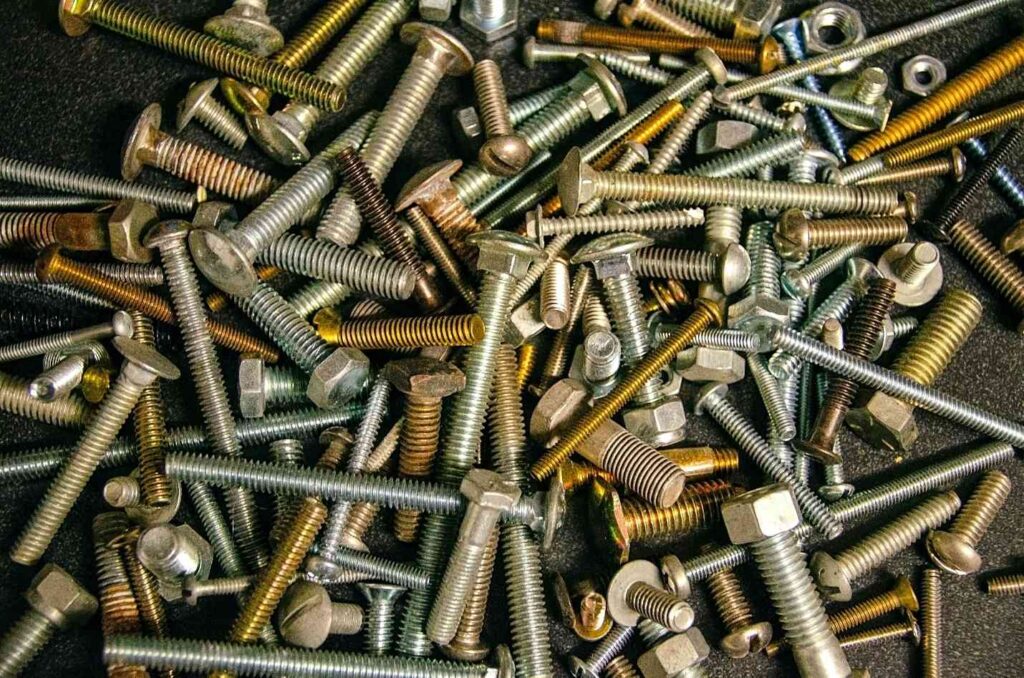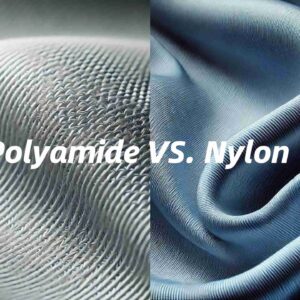In many industries, nuts and bolts are used to secure removable joints. Externally threaded bolts and internally threaded nuts provide stable connections under tensile and compressive stresses. Construction uses anchor bolts to hold buildings to concrete. On the other hand, the car industry uses hex nuts and flange bolts for engine assembly and frame stability. Machinery requires precise bolts and lock nuts for vibration resistance. Meanwhile, electronics employ miniature ones for sensitive, compact assemblies. This article compares the nut vs. bolt, their types, and uses.
What are Nuts?

Systems needing precise, secure connections need nuts (internally threaded female fasteners). They have internal threads that match bolt male threads. In nut vs. bolt, the nut prevents the bolt from loosening under mechanical stress or vibration. Lock nuts utilize nylon inserts or serrations in high-vibration applications to avoid loosening. A sound nut system holds components together and makes disassembly easy. Jam nuts are half-sized nuts used with full-size nuts to hold components in place and prevent reverse motion, a problem in heavy equipment with rapidly fluctuating forces. Titanium nuts are lightweight and corrosion-resistant for aerospace uses.
Types of Nuts
- Acorn Nuts: Cap nut with a dome-shaped top for a clean look and safety.
- Hex Nuts:The most common nut with a six-sided shape for easy fastening.
- Jam Nuts:Thin hex nuts to lock standard nuts in place.
- Lock Nuts: To prevent loosening under vibration or torque.
- Push Nuts: Installed while pushing onto a bolt or shaft for a secure fit.
- Coupling Nuts: Long nuts to connect two threaded parts.
- Speed Nuts: Clip-on nuts that don’t require tools for fastening.
- Square Nuts: Four-sided nuts for a stronger connection in specific applications.
- T-Nuts: T-shaped nuts with prongs to secure materials like wood or plastic.
- U-Nuts: U-shaped, tool-free fasteners in sheet material connections.
- Wing Nuts: Nuts with side wings for easy hand-tightening or removal.
What are Bolts?

Externally threaded (male) bolts have a solid cylindrical body with a hex or flanged head. Nut vs. bolt dynamics depends on the bolts’ tensile load transmission. Technically, bolts are pulled apart by tension or axial forces. It renders bolt type and material important in engineering. Depending on the grade, hex bolts, one of the most popular varieties, may endure 150,000 psi tensile forces in structural applications. In contrast, carriage bolts are recommended in wood connections because the square neck beneath the head embeds into the wood to prevent rotation for mechanical stability and simplicity of installation. Bolt tensile stress may cause catastrophic failures in load-bearing structures, including bridges or massive equipment, if not appropriately estimated.
Types of Bolts
- Carriage Bolts:Self-locking bolts with a domed head and square section beneath.
- Anchor Bolts: Heavy-duty fasteners to secure structures to concrete.
- Blind Bolts: Bolts used when access is only available from one side.
- Double-end Bolts: Threaded on both ends to connect two parts.
- Hex Bolts: Bolts with a six-sided head used in a range of applications.
- Flange Bolts: Bolts with a built-in flange that acts as a washer.
- U-Bolts:U-shaped bolts in plumbing and automotive applications.
- J-Bolts: J-shaped bolts employed for structural support.
- Lag Bolts: Extra-strong bolts to connect heavy materials.
- Specialty Bolts: Custom bolts for particular applications.
- Eye Bolts:Bolts with a looped head to lift or secure with ropes.
Key Differences between Nuts and Bolts
Definition
In any nut vs. bolt comparison, the structure remains the primary distinction. Female-connected nuts are hollow, round cylinders with internal threads. It relies on the bolt and is passive. On the other hand, bolts are cylindrical fasteners with male threads and a hexagonal head. Furthermore, bolts travel through pre-drilled holes and are held by nuts, so they are not pointed like screws. Depending on load and application, the bolt’s shank may be completely or partly threaded.
Threading
Nut internal threading is important to secure fastening. Nuts have female threads to grab bolt male threads. The pitch of such threads is key. For instance, fine-threaded nuts are used in aerospace because they are more precise yet need a correctly positioned mating bolt. Bolts feature male threads on their shanks to engage the nut. For speedier assembly, coarse threads are used in construction. Yet, fine threads are preferred for precise devices, including medical equipment.
Forces
In the nut vs. bolt dynamic, forces vary. When loaded, nuts are under compression. Compressive force holds materials together but may fail a nut if the load exceeds its capability. Heavy structural uses require heavy structural hex nuts since they can endure high compressive stresses. However, tensile forces pull bolts apart. Tensile stress develops along a bolt’s shank when tightened. An SAE J429 Grade 8 bolt can bear up to 150,000 psi of tensile stress for construction and automotive.
Functions
Though interconnected, nuts and bolts have different functions. A bolt’s nut locks components in place and makes disassembly straightforward. Jam nuts are used with standard nuts to secure the connection against vibration and outside forces. However, bolts support tensile stresses and align pieces. U-bolts keep piping or spherical items in place under heavy mechanical strain.
Size and Shape
When analyzing the size and shape of the nut vs. bolt comparison, we see that nuts are smaller and more variable in form. Wing nuts are used in fast assembly and have projecting “wings” for manual tightening. Square nuts decrease loosening in high-vibration situations while increasing surface contact. Nonetheless, bolts are larger with specific head designs. Woodworkers use carriage bolts with smooth, rounded heads to clean and prevent rotation during installation. Standards can range from #6 bolts for electronics to 1-inch anchor bolts for structural steel.
Types
In the nut vs. bolt classification, different types exist. Hex nuts are the most prevalent and found in most industries. In aerospace applications, nylon insert lock nuts endure vibration up to 400°F. Bolts also vary. Strength and adaptability make hex bolts popular for heavy-duty construction and light machinery assembly. Woodworking requires a firm grip, so lag bolts feature deeper threads. Instead, eye bolts hoist enormous weights from 500 to over 10,000 lbs., depending on size.
Choosing the Right Nut and Bolt
When choosing the proper nut and bolt, the material is key. Aluminum is lightweight and conducts well, but it lacks tensile strength (up to 310 MPa) and is unsuitable for large loads. Steel bolts, especially grade 8, can take 830 MPa tensile stress and are appropriate for structural applications.
Though more expensive, titanium is strong (up to 900 MPa) and corrosion-resistant for aerospace and marine applications. Further, thread matching between nuts and bolts matters. Mismatched nut and bolt threads limit torque transfer and joint integrity. E.g., the same thread-type nut must match an M12 bolt’s 1.25 mm pitch. Load requirements are also important. Bolts under tension (like double-end bolts) need potent tensile strength to avoid elongation while nuts are compressed.
Outdoor usage calls for dealing with corrosion. Stainless steel resists rust in humid environments, although zinc-plated steel temporarily does. Titanium is better for long-term saltwater exposure. So, material, threading, load, and environmental studies determine the best “nut vs. bolt” decision.
Contact us if you need help choosing the appropriate nut and bolt for your application.
FAQs about Nut vs. Bolt
Is A Bolt Stronger Than A Nut?
As a thumb rule, the nut should be stronger than the bolt.
What Is The Difference Between A Bolt And A Stud Nut?
A stud without a head may be inserted in a drilled and tapped hole and clamped with a nut. The bolt’s head would clamp, so who knows whether it can be tightened down.
What Is The Weakest Part Of Bolt?
The small thread diameter is the weakest part of any mechanical fastening. Since their thread diameters are similar, cut and rolled thread fasteners have the same weakest part/minor diameter.
What Does M10 Bolt Mean?
Metric threads have a capital M and a nominal outer diameter and pitch. M10 x 1.5 bolts have a 10mm outer diameter and 1.5mm threads (the most common M10 thread pitch).




